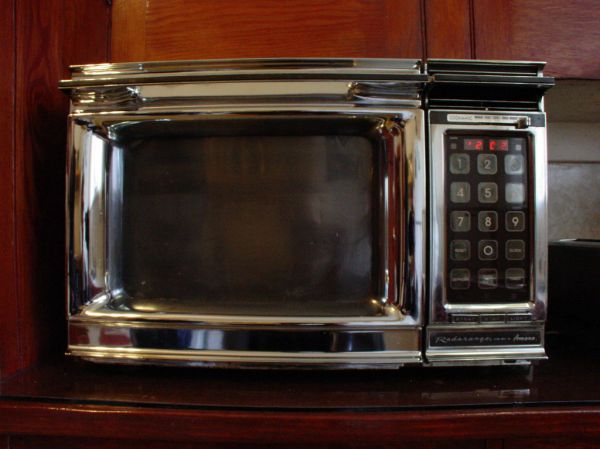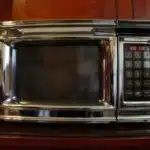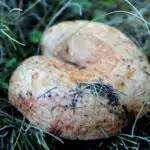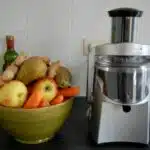Microwaves are an essential appliance in many households, but they can get dirty quickly. Food splatters, spills, and stains can build up over time, making it difficult to keep the microwave clean and hygienic. Fortunately, there is a simple and effective way to clean your microwave using lemon.
Using lemon as a cleaning agent is a natural and eco-friendly solution that not only cleans the microwave but also leaves it smelling fresh. Lemon contains citric acid that helps break down grease and grime while also disinfecting surfaces. In this article, we will explore how to effectively clean your microwave with lemon to ensure optimal hygiene and cleanliness in your home.
Gather Your Supplies
As a home cleaning expert, I understand the importance of keeping your kitchen appliances clean and sanitized. A dirty microwave can be a breeding ground for bacteria, and it can also affect the taste of your food. Fortunately, cleaning your microwave is a simple task that can be accomplished with just a few supplies.
To get started, gather your supplies checklist: a microwave-safe bowl, water, lemon juice or half of a lemon, and a clean cloth. You may also want to consider alternative cleaning solutions such as vinegar or baking soda if you do not have any lemons on hand. Having these items ready will make the process much easier and efficient.
Before you begin cleaning, take a moment to prepare the lemon. Cut it in half and squeeze the juice into the bowl of water. The acidity in the lemon will help loosen any stuck-on food or stains inside the microwave. With these preparations complete, you are now ready to tackle cleaning your microwave with lemon!
Prepare The Lemon
- To clean a microwave with lemon, begin by cutting a fresh lemon in half.
- Use the cut lemon to scrub the inside of the microwave, allowing the acidic juices to loosen any grime or stuck-on food.
- After scrubbing with the lemon, squeeze the juice of the lemon into a bowl and add an equal amount of water.
- Place the bowl in the center of the microwave and turn it on for five to ten minutes to steam and sanitize the inside of the microwave.
Cut The Lemon
To prepare the lemon for cleaning your microwave, you will need to cut it into halves or wedges. Cutting a lemon is a simple and straightforward process that can be done in various ways depending on your preference. However, it is essential to ensure that the lemon is fresh and ripe for maximum effectiveness. The benefits of using lemons for cleaning are numerous as they contain natural acids that can dissolve dirt and grime while leaving a refreshing scent.
One option for cutting lemons is to slice them horizontally with a sharp knife into thin rounds. Alternatively, you may choose to cut the lemon into wedges by first slicing off both ends of the fruit and then dividing it in half lengthwise before making diagonal cuts across each half. Another alternative citrus cleaning option is to use grapefruit or lime instead of lemon, which also contains citric acid and has similar effects.
In conclusion, cutting a lemon is an essential step in preparing it for use in cleaning your microwave. By doing so correctly, you can harness the benefits of its natural acids to remove stains and odor while avoiding harsh chemicals. Whether you choose to slice it into rounds or wedges, ensure that the fruit is fresh and ripe for optimal results. Remember that there are alternative citrus cleaning options such as grapefruit or lime if lemons are not readily available.
Squeeze The Juice
To fully prepare the lemon for cleaning your microwave, you must also squeeze the juice out of it. Squeezing a lemon is a simple process that can be done using various tools such as a citrus juicer or simply by hand. The benefits of using lemon juice for cleaning are numerous, as its acidic properties can break down stubborn stains and eliminate odors.
To squeeze a lemon by hand, first cut the fruit in half or into wedges as previously discussed. Then, hold one half firmly and use your other hand to twist and press the fruit against a juicer or strainer over a bowl. Make sure to remove any seeds that may have fallen into the juice. Alternatively, you may use an electric citrus juicer if you have one available.
If lemons are not readily available, there are other citrus fruits that can be used for cleaning purposes such as grapefruit and lime. These fruits also contain citric acid and offer similar benefits to lemons when used for cleaning. Squeezing their juices is also done the same way as with lemons.
Incorporating freshly squeezed lemon juice into your cleaning routine offers many benefits over harsh chemical cleaners. It’s effective at breaking down tough stains while leaving behind a refreshing scent. Remember that other citrus fruits like grapefruit and lime can also be used if lemons are not available, so don’t hesitate to experiment with different options!
Cut The Lemon In Half
After preparing the lemon, it is now time to cut it in half. But before squeezing the juice onto the microwave, let us first discuss the benefits of using lemon for cleaning. Lemon has natural acidity that can dissolve stubborn stains and grease in no time. Plus, its citrus scent leaves a refreshing aroma in the kitchen.
However, if you do not have lemon on hand or prefer not to use it for cleaning, there are alternatives available. Vinegar is one option that works similarly to lemon due to its acidic properties. Baking soda is another alternative that can help remove odors and stains from your microwave.
Now that we know the benefits of using lemon and alternative options let us proceed with squeezing the lemon juice onto a microwave-safe bowl or cup.
Squeeze The Lemon Juice
To prepare the lemon juice for cleaning a microwave, start by cutting a lemon in half and using a juice squeezer to extract the juice from each half.
The extracted lemon juice can be applied to a cleaning cloth and then used to wipe down the interior and exterior surfaces of the microwave.
Squeezing the lemon juice directly onto the surface of the microwave is also an effective cleaning method, as the acid in the lemon juice can help to cut through grease and grime.
For best results, allow the lemon juice to sit on the microwave surface for a few minutes before wiping it off with a damp cloth.
Prepare The Lemon Juice
The benefits of using natural cleaners for household chores are immense. One such natural cleaner that has been popular for cleaning microwaves is lemon juice. It not only helps to dissolve the grease and grime present in the microwave but also leaves behind a refreshing fragrance. For those who prefer to use eco-friendly products, lemon juice is an excellent alternative to chemical-laden cleaners.
To prepare the lemon juice, start by cutting the lemon into two halves and squeezing out the juice into a bowl. Ensure that all seeds are removed from the juice as they can create a mess in the microwave. If you don’t have fresh lemons on hand, bottled lemon juice can be used as an alternative. However, it’s important to check that it doesn’t contain any additives or preservatives.
While there are alternatives to using lemon for cleaning microwaves, such as vinegar or baking soda, using lemon juice has its unique benefits. The citric acid present in lemons acts as a natural degreaser and effectively removes stubborn stains from microwaves without leaving any residue behind. Additionally, it’s a cost-effective solution compared to store-bought cleaners and much gentler on the environment.
Squeeze The Lemon Juice
When it comes to cleaning microwaves, lemon juice is a go-to natural cleaner for many people. Squeezing the lemon juice is the first step in preparing this solution. To do so, cut the lemon in half and extract its juice, ensuring that there are no seeds left behind. Bottled lemon juice can also be used as an alternative if fresh lemons are not available.
The benefits of using natural cleaners like lemon juice for household chores are numerous. Not only is it eco-friendly, but it’s also much gentler on surfaces than chemical-laden cleaners. While alternatives such as vinegar or baking soda can be used to clean microwaves, using lemon juice has unique advantages due to its citric acid content acting as a natural degreaser that removes stubborn stains without leaving any residue behind.
Despite other options being available, using lemon juice remains a popular choice for cleaning microwaves due to its effectiveness and affordability compared to store-bought cleaners. Plus, unlike some alternatives, it leaves behind a refreshing fragrance. By squeezing the lemon juice and utilizing its benefits as a natural cleaner, you can maintain a clean and healthy home without harming your surroundings or breaking the bank.
Add Water To A Microwave-Safe Bowl
Did you know that the average American household uses their microwave at least once a day? That’s a lot of potential messes and buildup inside the appliance! To keep your microwave clean and functioning properly, it’s important to clean it regularly. But how often should you be cleaning your microwave?
Experts recommend wiping down the inside of your microwave with a damp cloth after each use to prevent any food splatters from drying onto the surface. However, a more thorough cleaning should take place every one to two weeks depending on usage. Neglecting to clean your microwave can lead to unpleasant odors and even damage to the appliance.
Now that we’ve established the importance of regular microwave cleaning, let’s discuss how to do it effectively. Adding water to a microwave-safe bowl is a great way to loosen any stuck-on food particles and eliminate odors. However, if you don’t have any lemons on hand, you can also use vinegar as an alternative. White vinegar has natural antibacterial properties and can be just as effective at cleaning your microwave.
Incorporating this step into your regular cleaning routine is quick and easy, providing numerous benefits for both you and your appliance. But what comes next? How do you actually incorporate lemon into this process? Let’s find out in the next section.
Place The Lemon In The Bowl
To continue with cleaning your microwave using lemon, the next step is to place the lemon in a bowl. But first, let’s talk about the benefits of using lemon for cleaning. Lemon is a natural disinfectant due to its acidic properties, making it an excellent choice for cleaning kitchen appliances like microwaves. It also has a refreshing scent that can eliminate unpleasant odors, leaving your microwave smelling fresh and clean.
Aside from being used as a cleaner, lemons have other alternative uses in cleaning. For example, you can use them to remove stains on cutting boards or countertops by rubbing half a lemon on the affected area and letting it sit for 10 minutes before wiping it clean. Another way to use lemons in cleaning is to mix them with baking soda and water to create an all-purpose cleaner that can be used on various surfaces.
Now that we’ve discussed the benefits of using lemon for cleaning and some alternative uses, let’s move on to placing the lemon in the bowl. Cut one or two lemons into quarters and place them in a microwave-safe bowl filled with water. Make sure the bowl is not too small to avoid overflowing when microwaving. The lemon-infused water will steam inside the microwave, loosening any food particles or grime stuck inside. In the subsequent section, we’ll discuss how to microwave the bowl for five minutes to complete this cleaning process effectively.
Microwave The Bowl For 5 Minutes
Marvelous microwave, now it’s time to make the bowl a bit hotter. In this section, we will discuss how to heat the bowl and why it is necessary. Microwaving the bowl for five minutes is crucial to disinfect and remove any lingering odors in your microwave.
Before microwaving the bowl, ensure that you have cleaned it thoroughly with lemon juice. Place the bowl in the microwave and set it to five minutes on high power. It may take less or more time depending on your microwave’s wattage, so keep an eye on it.
Here are some essential points to keep in mind while microwaving the bowl:
- Do not cover the bowl with anything.
- If there are any metal parts attached to your bowl, remove them before microwaving.
- Use gloves or a towel when handling the hot bowl.
- Open windows or turn on ventilation systems as fumes might emit from the lemon juice.
- Ensure that children and pets stay away from the microwave while in use.
Alternative methods such as using water instead of lemon juice can also be used for cleaning your microwave. However, lemon juice has natural antibacterial properties that make it an excellent choice for disinfecting surfaces. Regardless of which method you choose, always follow safety precautions and handle hot objects with care. Once you have finished microwaving, let the bowl cool down before moving onto our next step: wiping down your microwave’s interior.
Let The Bowl Cool
After allowing the bowl to microwave for five minutes, it’s important to let it cool before opening the door. This will prevent any accidents or burns that could occur from the hot bowl. As you wait, take some time to consider why using natural cleaners is beneficial for your microwave.
Firstly, natural cleaners like lemon are non-toxic and safe for your home environment. Unlike harsh chemical cleaners, they won’t release harmful fumes into the air or leave behind chemical residue on surfaces. Additionally, using natural cleaners can save you money in the long run since they’re often cheaper than their commercial counterparts.
If you don’t have lemon on hand or prefer not to use it as a cleaner, there are alternatives available. Vinegar and baking soda are two common household items that can also be used to clean microwaves. Simply mix them with water and follow a similar process as the lemon method outlined earlier.
Once your bowl has cooled down sufficiently, carefully remove it from the microwave and discard any remaining liquid inside. It’s now time to move onto the next step in cleaning your microwave – wiping down its interior with a damp cloth!
Remove The Bowl From The Microwave
So, you’ve successfully removed the bowl from your dirty microwave. Bravo! Now it’s time to tackle the main event: cleaning that stubborn grime off the interior. Don’t worry, we’ve got some tricks up our sleeves.
Alternative methods for cleaning a microwave can include using vinegar or baking soda, but today we’re focusing on the power of lemon. Cut a lemon in half and squeeze the juice into a microwave-safe bowl filled with water. Place the bowl in the microwave and heat on high for 3-5 minutes, until the mixture boils and steam covers the interior. Let it sit for another 5 minutes before opening the door and wiping down with a clean cloth.
Preventing future messes is key to keeping your microwave clean and fresh-smelling. Avoid heating foods without covering them, as this can cause splatters that are difficult to remove later on. And remember to wipe down your microwave regularly, even if it doesn’t appear dirty – this will help prevent buildup from occurring in the first place.
Now that you know how to remove that pesky grime using lemons, it’s time to wipe down the interior of your microwave. But don’t worry, we’ll show you how in just a moment!
Wipe Down The Interior Of The Microwave
After removing the bowl from the microwave, the next step in cleaning your microwave with lemon is to wipe down the interior. This will help remove any food particles or stains that may be present. To get started, grab a fresh lemon and cut it in half. Then, squeeze the juice of one half into a microwave-safe bowl filled with ½ cup of water.
Next, place the bowl in the microwave and heat it on high for three minutes. The steam from the lemon-water mixture will help loosen any stubborn stains or grime inside the microwave. Once three minutes have passed, carefully remove the bowl from the microwave using oven mitts or a dish towel.
Now it’s time to wipe down the interior of your microwave using a clean cloth or paper towel. Be sure to pay special attention to any areas with stubborn stains or residue. If needed, you can dip your cloth in some warm water mixed with dish soap to help remove tough spots. Follow these steps regularly for maintaining a clean and odour-free microwave.
- Use a soft cloth for wiping down as hard scrubbing can scratch surfaces
- Avoid using abrasive cleaners like steel wool pads
- Clean up spills immediately after they occur
- Place a cover on top of food containers while heating them up
- Regularly take out turntable and wash thoroughly
With these tips, you can easily keep your microwave looking brand new for years to come! Now that we’ve wiped down the interior of our microwave let’s move on to cleaning its plate – an often overlooked but important part of keeping your appliance clean and hygienic.
Clean The Microwave Plate
How often do you clean your microwave plate? If you’re like most people, it probably doesn’t get cleaned as frequently as it should. But fear not, because cleaning the microwave plate is a simple and quick task that can make a big difference in the appearance and cleanliness of your appliance.
To start, remove the plate from the microwave and wash it with soap and hot water. Stubborn stains can be removed by soaking the plate in a solution of equal parts water and white vinegar for 10-15 minutes before washing. Be sure to dry the plate thoroughly before placing it back in the microwave to prevent any unwanted moisture buildup.
While you have the plate out, take a moment to clean the microwave vents as well. These are often overlooked but can accumulate grease and grime over time, leading to unpleasant odors or decreased performance. Use a damp cloth or sponge to wipe down the vents and remove any buildup, being careful not to damage them. With these steps complete, your microwave will be looking and performing better than ever before.
| Clean Microwave Vents | Removing Stubborn Stains | Dry Thoroughly |
|---|---|---|
| Wipe down vents with damp cloth or sponge | Soak in equal parts water and white vinegar for 10-15 mins. | Prevent moisture buildup by ensuring plate is dry before placing back in microwave |
| Wash with soap and hot water | ||
| Use scrub brush on tough stains if necessary |
Now that your microwave plate is sparkling clean, it’s time to move on to the exterior of the appliance. This area can also collect dirt, fingerprints, and other debris over time that detracts from its appearance. Stay tuned for our next section where we’ll cover how to easily clean all areas of your microwave without damaging its delicate components.
Clean The Exterior Of The Microwave
After cleaning the microwave plate, it’s time to focus on the exterior of your microwave. The exterior can accumulate dirt, fingerprints, and stains that can make it look unappealing. Using natural cleaners like lemon can help remove these stains and leave your microwave looking brand new.
Benefits of using natural cleaners:
- They are non-toxic and safe for use around kids and pets.
- They are inexpensive compared to chemical cleaners.
- They have a pleasant scent that leaves your home smelling fresh.
Tips for maintaining a clean microwave exterior:
- Wipe down the exterior regularly with a soft cloth dipped in warm soapy water.
- Avoid using abrasive sponges or harsh chemicals as they can damage the surface of your microwave.
- Use a microfiber cloth to dry the surface after cleaning to avoid streaks.
Now that you have cleaned your microwave with lemon, it’s important to dispose of the lemon properly. Do not throw it in the trash as it can cause bad odors and attract pests. Instead, cut it into small pieces and grind it in a garbage disposal unit or put it in a compost bin if you have one. This will not only keep your kitchen smelling fresh but also reduce waste and benefit the environment.
Dispose Of The Lemon
After using a lemon to clean your microwave, it is important to dispose of it properly. Simply throwing it in the garbage can lead to unpleasant odors and attract bugs. Instead, consider composting the lemon if possible. Composting is a great way to reduce waste and create rich soil for gardening. If you don’t have a compost bin, check with your local government for composting options.
In addition to being an effective cleaning agent, using natural cleaners like lemons has many benefits for your home. They are environmentally friendly and non-toxic, making them safe for use around children and pets. Plus, they often leave a pleasant scent behind instead of harsh chemical smells that can linger long after cleaning. By incorporating more natural cleaners into your cleaning routine, you can create a healthier living space for you and your family.
Overall, proper disposal of the lemon used in cleaning your microwave is just as important as the cleaning process itself. By composting or finding alternative disposal methods, you can reduce waste and benefit the environment. And by using natural cleaners like lemons, you can create a safer and more pleasant living space while also reducing exposure to harmful chemicals. Repeat this process if necessary to keep your microwave looking and smelling fresh.
Repeat The Process If Necessary
After disposing of the lemon, it’s time to assess whether your microwave is clean enough or not. If you are satisfied with the results, then congratulations! You have successfully cleaned your microwave with a natural and eco-friendly solution. However, if there are still some stubborn stains left behind, you may repeat the process as necessary.
One of the pros of using lemon for cleaning your microwave is that it can remove grease and grime effectively without leaving any chemical residue. Additionally, lemons are affordable and readily available in most grocery stores. However, one common mistake that people make when cleaning their microwaves with lemon is not covering their container properly. This can cause the lemon juice to evaporate too quickly and leave a sticky mess on the walls of your microwave.
To avoid this mistake, make sure that you cover your container with a lid or plastic wrap before microwaving it. Also, be careful when removing the container from the microwave as it may be hot. If you encounter any difficulties in removing tough stains after repeating the process, you may consider seeking professional cleaning services for your microwave.
Enjoy your clean microwave! With a little bit of elbow grease and some lemons, you can achieve a sparkling clean appliance in no time. Remember to always practice caution when handling hot objects and use natural solutions whenever possible to keep your home healthy and safe for yourself and those around you!
Enjoy Your Clean Microwave!
Like a freshly bloomed garden after a spring rain, your clean microwave is a sight to behold. Lemon is one of the most effective natural cleaning agents you can use to achieve this sparkling clean. Now that you have learned how to clean your microwave with lemon, it’s time to learn some tips for preventing future messes and the benefits of using natural cleaning methods.
Tips for Preventing Microwave Messes:
- Cover your food with a microwave-safe lid or paper towel before heating.
- Wipe up any spills or splatters immediately after they occur.
Benefits of Natural Cleaning Methods:
- Safe for you and the environment: Unlike harsh chemicals, natural cleaning products are not harmful to inhale or touch.
- Cost-effective: Many natural cleaning agents such as vinegar and lemon are inexpensive and readily available in most households.
To maintain your clean microwave, consider these tips for preventing future messes. Using natural cleaning methods like lemon not only saves money but also protects the environment. By implementing these simple changes, you will enjoy a sparkling clean microwave every time.
Conclusion
Cleaning your microwave doesn’t have to be a daunting task. With just a few simple steps, you can have a spotless appliance in no time. By using lemon, you not only get the cleaning power you need but also leave your microwave smelling fresh and clean.
To begin, gather all necessary supplies and prepare the lemon by cutting it in half and squeezing the juice into a microwave-safe bowl of water. Clean both the interior and exterior of the microwave with this solution and dispose of the lemon once finished. Repeat the process if necessary until your microwave is sparkling clean.
As a home cleaning expert, I highly recommend using natural ingredients like lemon for cleaning your appliances as they’re non-toxic and safe for use around children and pets. Plus, incorporating this easy method into your regular cleaning routine will save you time and money while keeping your home looking its best. So go ahead and give it a try – your clean and fresh-smelling microwave awaits!
Image Credits
- “amazing microwave” by jmv (featured)





























